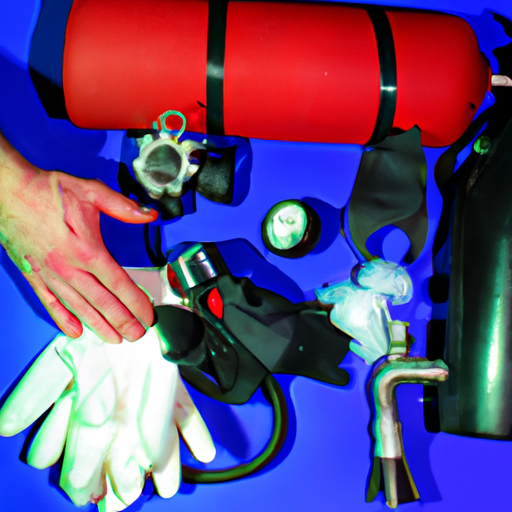
How to Handle an Equipment Failure While Diving
Introduction
As a seasoned diver, you already know that exploring the underwater world is an exhilarating experience. But, like everything in life, diving comes with its own set of challenges. One of the most frightening situations a diver can face is the failure of their equipment. This can be especially daunting for newer divers or those who haven’t encountered this before.
Don’t worry, though! Even the most experienced divers can encounter equipment failure, and it’s essential to know how to handle it properly to ensure your safety and a safe return to the surface.
Identifying an Equipment Failure
The first step in handling an equipment failure is to recognize what’s happening. Vital gear failures are rare, but they do require quick action. Here are some common examples of equipment failures that you might encounter:
- Your regulator is free-flowing, and you’re running out of air too quickly
- Your buoyancy control device (BCD) is leaking air or won’t inflate/deflate
- Your dive computer is malfunctioning, or the battery is dead
If you ever face an equipment failure, the most important thing to do is to remain calm and remember your training.
What to Do in Case of an Equipment Failure
Here are a few useful steps to follow when dealing with equipment failure while diving:
- Signal Your Buddy: Using dive signals, let your buddy know that you are encountering a problem. They can then keep an eye on you while you check your gear and, if needed, help you manage the situation.
- Assess Your Gear: Quickly identify the problem by checking your gear, and try to fix it or isolate the problem. If you’re not sure what’s going on, or you’re inexperienced, signal your dive buddy, and the two of you can try to figure it out together.
- Activate Your Backup: Always have backup gear on hand. If your primary regulator fails, switch to your backup regulator. If your dive computer fails or if you’re not using one, use a dive watch or dive tables to monitor your time and depth.
- Control Your Buoyancy: If you’re experiencing free-flow from your regulator, you’ll be using more air than usual. You can compensate for this by adding air to your BCD or adjusting your ballast weight. This will also help to maintain your neutral buoyancy and prevent ascents or descents.
- End Your Dive: If the problem is severe and can’t be fixed while diving, it’s best to end the dive and return to the surface immediately. Signal your buddy that you’re ascending and keep them informed of your progress. Remember to do it safely and always follow your dive plan.
Conclusion
Equipment failure is part and parcel of diving. It’s nothing to fear, so long as you’re prepared for it. Knowing how to handle equipment emergencies will make you a more confident and safer diver. The key to handling gear failure is to stay calm, assess and fix the problem if possible, and activate your backup gear if you have to.
Take the time to educate yourself, dive with experienced buddies, and stay aware of your surroundings. Always follow your dive plan and, most importantly, have fun and enjoy your dive!







